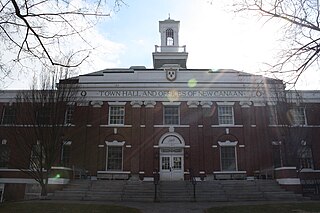
New Canaan is a town in Fairfield County, Connecticut, United States. The population was 20,622 according to the 2020 census. The town is part of the Western Connecticut Planning Region.

Stamford is a city in Fairfield County, Connecticut, United States, 34 miles outside of New York City. It is the sixth-most populous city in New England. Stamford is also the largest city in the Western Connecticut Planning Region, and Connecticut's second-most populous city, behind Bridgeport. With a population of 135,470, Stamford passed Hartford and New Haven in population as of the 2020 census. It is in the Bridgeport-Stamford-Norwalk-Danbury metropolitan statistical area, which is part of the New York City metropolitan area.

Secondary education is the last six or seven years of statutory formal education in the United States. It culminates with twelfth grade. Whether it begins with sixth grade or seventh grade varies by state and sometimes by school district.
Rippowam High School was once a public high school in Stamford, Connecticut, United States. The school opened in the fall of 1961 as the second high school in the city. The school derived its name from the Native American tribe that inhabited Stamford and the surrounding area before European settlement. The school mascot name was the "Warriors," and the school colors were green and white. The name of its annual yearbook was "Riptide".
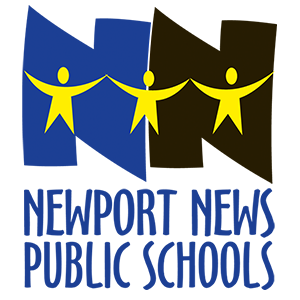
Newport News Public Schools (NNPS) is a division of Newport News, Virginia that operates the city's system of public schools. As of 2021-2022, NNPS had an enrollment of 26,648. NNPS employed about 2,738, including approximately 1,714 teachers.
Stamford High School is a high school, founded in 1873, in Stamford, Connecticut. It is one of three public high schools in the Stamford Public Schools district, along with Westhill High School and Academy of Information Technology and Engineering (AITE).

The West Windsor-Plainsboro Regional School District is a comprehensive high achieving regional public school district in the U.S. state of New Jersey, serving students in pre-kindergarten through twelfth grade from West Windsor Township and Plainsboro Township. There are four elementary schools, two upper elementary schools, two middle schools and two high schools. Niche.com listed the district as fourth best in New Jersey, and 63rd best in the nation, according to its 2023 Best Schools ranking.
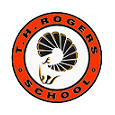
Thomas Horace Rogers School is an alternative primary and secondary public school and part of the Houston Independent School District. The school is at 5840 San Felipe in Houston, Texas, United States, outside of the 610 Loop and inside Beltway 8, west of Uptown Houston.
Brevard Public Schools is a school district serving Brevard County, Florida, and based in Viera, Florida.

Milwaukee Public Schools (MPS) is the largest school district in Wisconsin. As of the 2015–16 school year, MPS served 75,568 students in 154 schools and had 9,636 full-time equivalent (FTE) staff positions. The system is one of the largest in the United States by enrollment. A publicly elected school board, the Milwaukee Board of School Directors, provides direction and oversight, with a superintendent heading the organization's administration.
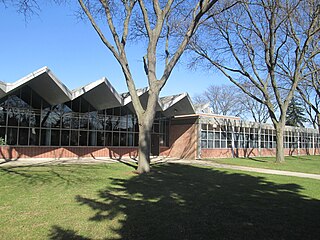
The Dearborn Public Schools is a school district that includes the entire city of Dearborn, Michigan and a small portion of Dearborn Heights, both in Greater Detroit. Dearborn Public Schools is the third largest school district in Michigan, serving 20,000 students. The district had a $233 million budget for 2021.
The Livingston Public Schools are a comprehensive community public school district that serves students in pre-kindergarten through twelfth grade from Livingston, in Essex County, in the U.S. state of New Jersey. The district consists of six elementary schools, grades PreK/K-5; one middle school for grade 6 and another middle school for grades 7 and 8, and one four-year high school.

Weekly Reader Publishing was a publisher of educational materials in the United States that had been in existence for over 100 years. It provided teaching materials to elementary and secondary schools that was used by more than 90 percent of that country's school districts.

Middlesex Middle School is a middle school in the Darien Public Schools district in Darien, Connecticut, United States. This school is the highest point in the town with an architectural height of 90 feet. The school serves students from sixth through eighth grades. Each grade is divided into 4 teams of around 90 to 150 students. In eighth grade there are the Teal, Maroon, Navy and Green teams, for seventh grade there are the Gold, Purple, Aqua and Blue teams and for sixth grade there are the Yellow, Silver, Red and Orange teams.

Stamford, Connecticut was inhabited by Siwanoy Native Americans, prior to European colonization beginning in the mid-17th century. Stamford grew rapidly due to industrialization in the late-19th and early-20th century, and continued to grow rapidly throughout much of the mid-20th century. During the late-20th century, Stamford underwent a period of urban renewal which saw much redevelopment in its downtown. Stamford's population has continued to grow throughout the 21st century, with redevelopments in its downtown and the South End.
J.M. Wright Technical High School, or Wright Tech, is a technical high school located in Stamford, Connecticut, United States. It is part of the Connecticut Technical High School System.
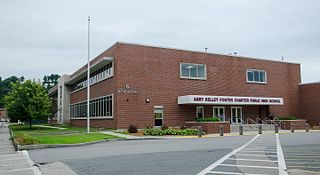
Abby Kelley Foster Charter Public School is a K–12 school located at 10 New Bond St., Worcester, Massachusetts, United States in former Heald Machine Company buildings. The school was founded in 1998.
Shawnee Heights USD 450 is a public unified school district headquartered in Tecumseh, Kansas, United States. The district includes the communities of southeast edge of Topeka, Tecumseh, Berryton, Watson, and nearby rural areas. The Shawnee Heights School District is a 5A school district that includes a total of 4 Elementary Schools, 1 Middle School, and 1 High School. Shawnee Heights School District is a suburban school district located in southeastern Shawnee County. The District has an estimated total of 3,500 Students from Pre-Kindergarten to 12th Grade. Tim Hallacy is the superintendent for the School District.

Norwalk Public Schools is the school district serving Norwalk, Connecticut.

University Prep Schools is a K-12 charter school network headquartered in the New Center area of Detroit. It has three districts within its network: University Preparatory Academy (UPA), University Prep Science & Math, (UPSM), and University Prep Art & Design (UPAD).














